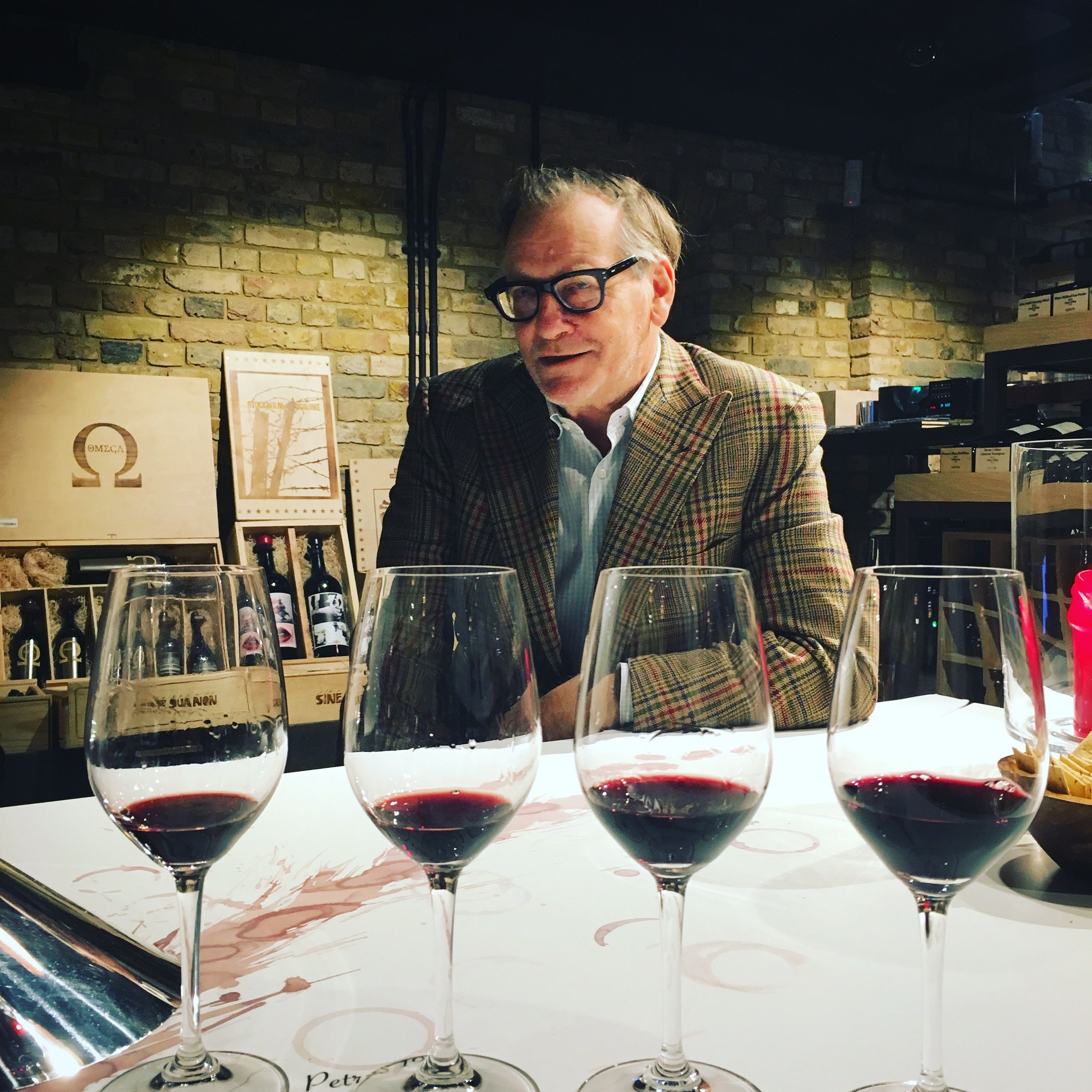Andrea Franchetti show three flights from Tenuta di Trinoro including Palazzi, the new Campis and the flagship wine itself – wines that only use Bordeaux varietals with consummate skill.
“I’d like to hide what’s in the blend,” Andrea Franchetti, winemaker of Tenuta di Trinoro, says with a heavy sigh that smacks of having been asked this question countless times before, “but everyone wants to know what it is.”
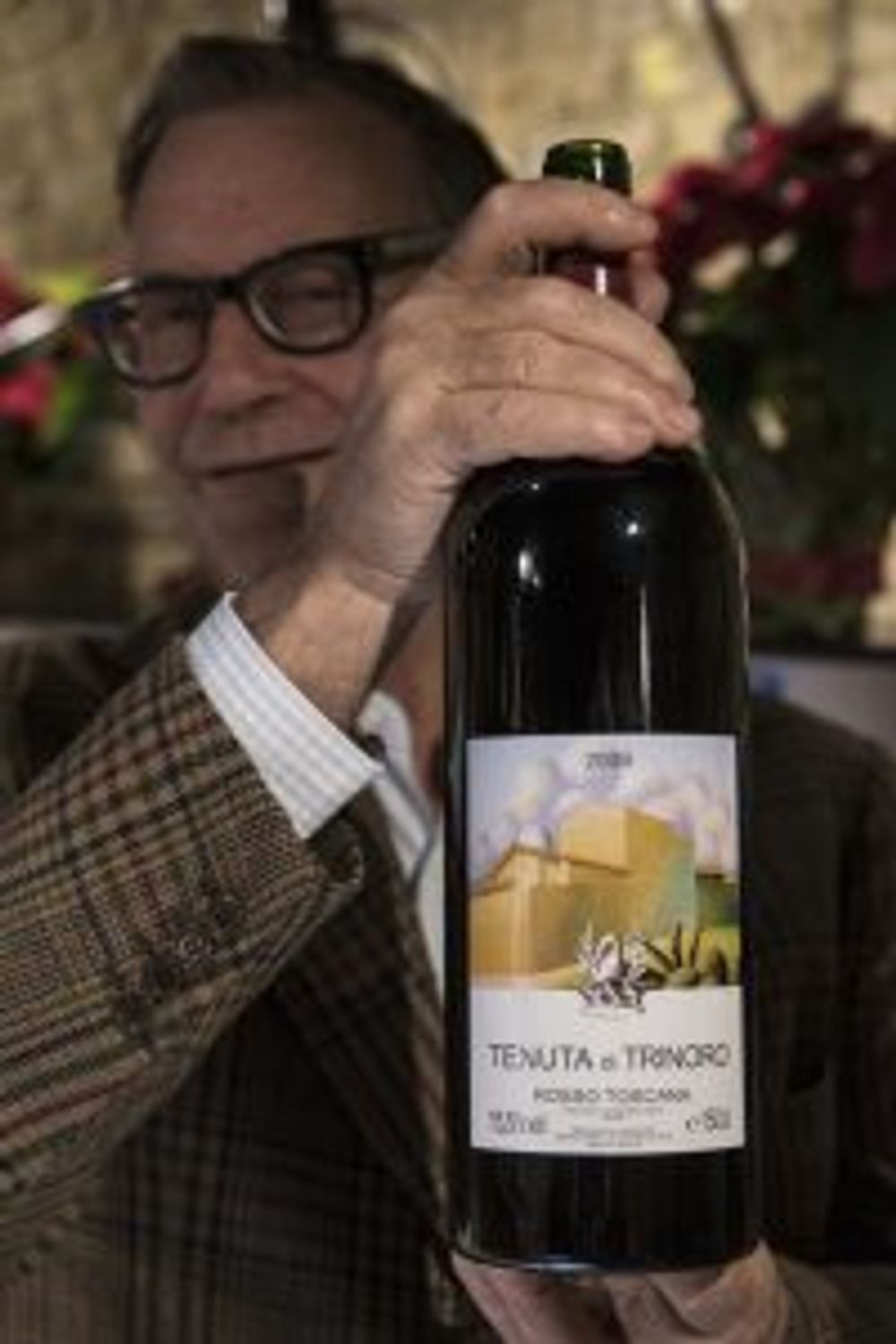
Andrea Franchetti: trying to ‘hide behind the blend’
“In Bordeaux they don’t tell you about the blend.”
We are in the basement tasting room at London’s Hedonism wine emporium going through three flights of his Merlot-dominant Palazzi, single varietal Cabernet Franc Campis and Bordeaux blend flagship wine, Tenuta di Trinoro.
The legendary winemaker has been responsible for producing some of Italy’s finest red wine since 1990 when he built the Tenuta di Trinoro winery and planted the vineyards from scratch, eschewing Sangiovese and only planting the varietals of Bordeaux, the city in which he studied.
He is renowned for making wines of immense power, longevity and great finesse.
Franchetti is of a certain age and his thick-set spectacles, check jacket and mid-Atlantic English accent makes him look and feel more like an art buyer than a winemaker.
But then in Tuscany the lines become blurred.
“Making wine is an artistic thing. Each year changes in the weather and also in my way of making wine, because I am affected by the landscape and the seasons,” he says.
The point about the huge variation in the blend
The reason for my question about the blend is that in his top wine, Tenuta di Trinoro, the variation is immense both in the actual varietals he uses and also the percentages of those varietals, from vintage to vintage.
The press blurb describes the wine as “made by Cabernet Franc with dressings of Merlot, Cabernet Sauvignon, Petit Verdot.”
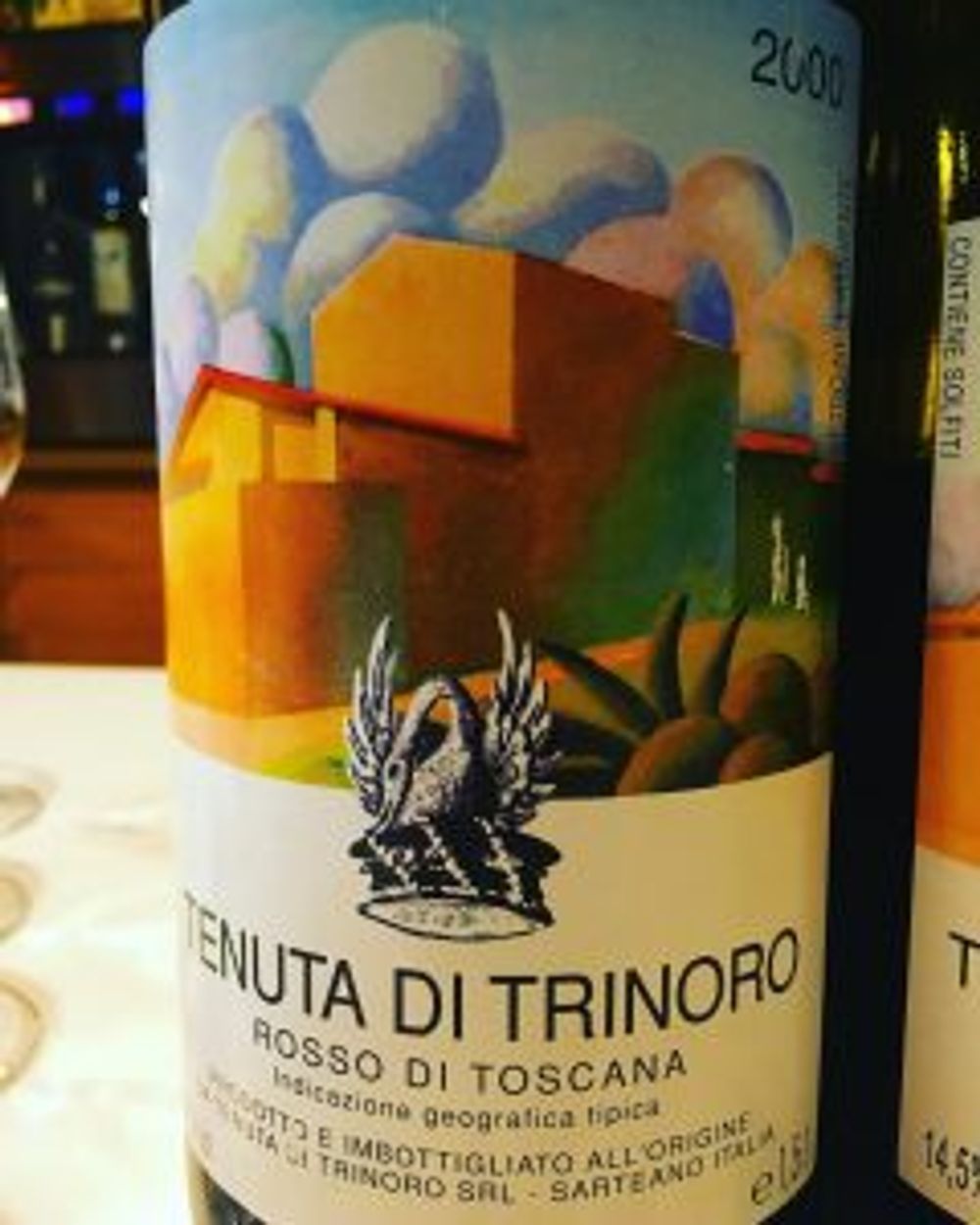
But while the Tenuta di Trinoro 2000 is made up of 55% Cabernet Franc, (with Cabernet Sauvignon 35% and Petit Verdot 15%), the 2005 is 63% Merlot with just 18% Cabernet Franc in it.
To use a Bordeaux analogy – it’s as if a first growth Right Bank decided to use two thirds Merlot one year and none the next.
“Every year the wine is different, and as I change my winemaking changes,” he says.
I can see Franchetti’s point, that the focus should be on the winemaker’s response to the season and the landscape but the wines in all four vintages are very different indeed and worth noting if you are lucky enough to buy any of the 7,500 bottles produced each year.
The skill and precision in the wine-making means that you can smell and taste the different components of the blend without recourse to the manual.
And it is also worth pointing out at this juncture that the Tenuta di Trinoro wines are sensational. Sen…sational.
It is as though, rather than commission a new piece of art to grace his wine labels each year as Mouton would, he creates a different masterpiece inside the bottle.
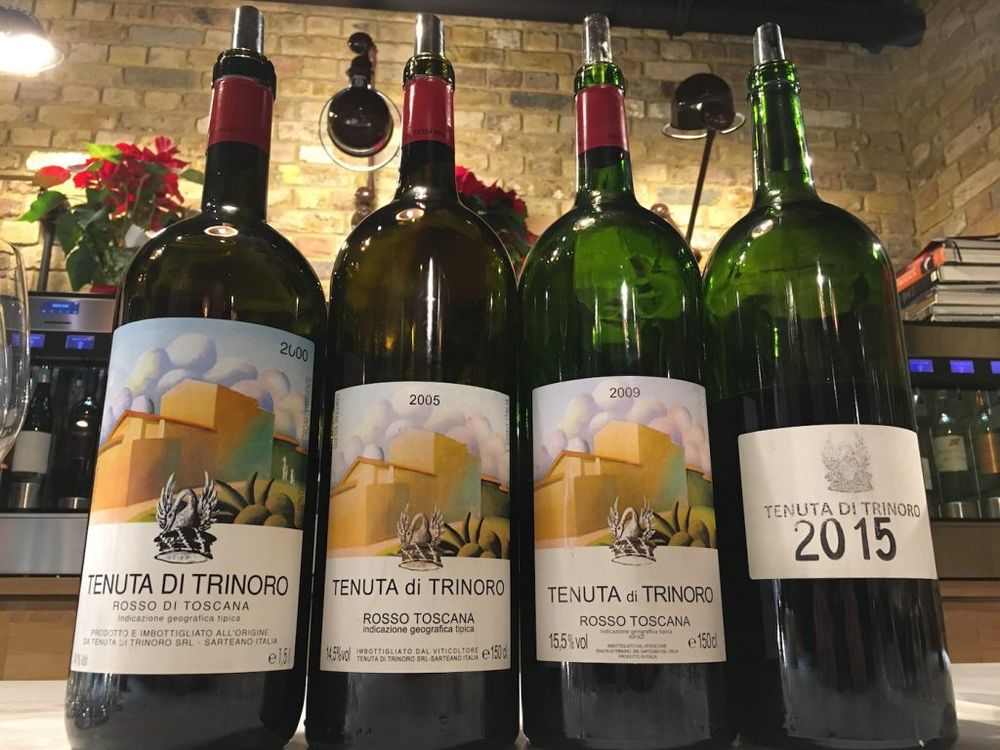
Four vintages of Tenuta di Trinoro 2000 -2015
An overriding characteristic of all three flights of wine on show – Palazzi, Campis and Tenuta di Trinoro – is that these are wines made from powerful, rich fruit, picked late and at a reasonable altitude (400-500m) and with cold enough evenings to lend the wines a powerful frame on which to hold the powerful body.
The 2000 is one of the best red wines I have tasted this year, or any year come to that. There is a deep brick red to the edge which declares its development. The nose is so inviting – savoury, with aromas of grilled meats, black cherry, spices and incense. The mouthfeel is easy, with seamless integration of silky tannins and wood. There’s a good length, not too persistent, and an almost (dare I say the ‘e’ word?) ethereal quality to the wine.
The 2005 is a very different wine, and not just in age. The colour is deep claret, the nose more minty with a sweet, vibrant, freshly-kneaded dough, almost syrupy nose the longer it is in the glass. On the palate I got wild cherry, black cherry, fresh leaf tobacco, cake spice and the wine also had a great length.

Tasting in exalted company
With all these wines, the high alcohol (14% in the 2000, 15.5% in the 2009) is managed well and unbelievably fresh.
The 2009 has much greater intensity as you would expect, with younger, more obvious tannins on the mid and front palate, giving this vintage greater texture and structure. The richness both in aroma and taste is considerable, with a nice hint of eucalyptus and spice on the nose.
Where the ’09 was 42% each of Merlot and Cabernet Franc (12% Cabernet Sauvignon, 4% Petit Verdot) the 2015 has a higher percentage of Cabernet Franc (50%) the rest of the blend Merlot (36%), Cabernet Sauvignon 10% and Petit Verdot 4%
The 2015 is En Primeur and a very young wine, with great precocity – bright purple edges, iodine, iris, green pepper and flavours like crushed blueberries with mouth-puckering tannins as if you had just bitten a sloe. Having said that, even though the tannins are grippy, the different components are much better integrated than you’d think of such a young wine with such broad shoulders.
How the wine will develop I’m not sure, again, because the blend of the ’00 and ’05 are just so different.
Five vintages of Palazzi and the second vintage of the Campis
At the risk of being hugely dismissive the five vintages of the Merlot-dominant Palazzi ’97, ’99, ’09, ’10 and ’11 are not really my thing, despite them being extremely well-made wines.
They all cope with their massive alcohol well, except for the ’09 where the 16% abv really lingers on the palate, like a splash of brandy on Christmas pudding.
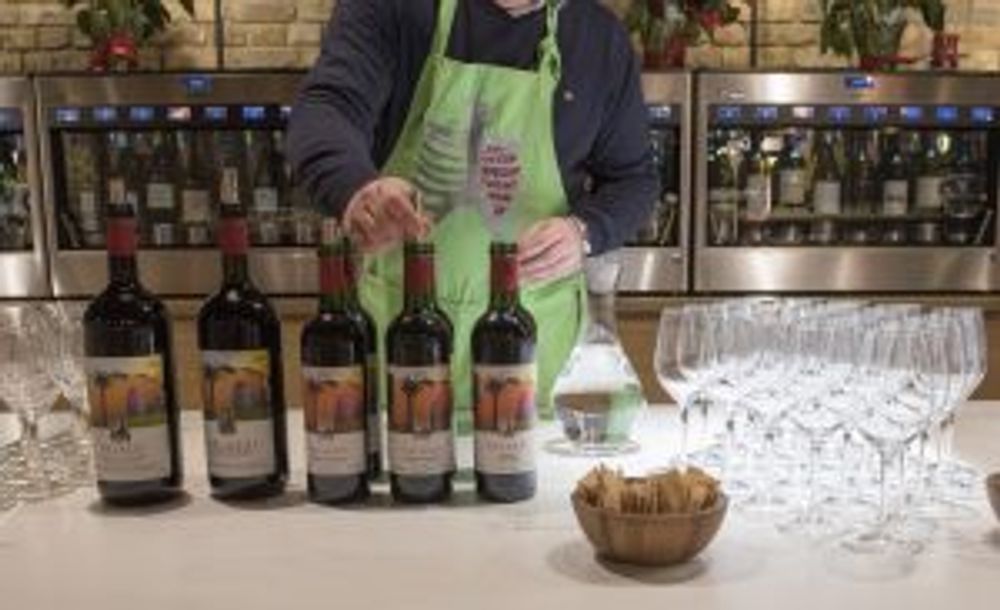
Franchetti looked like phasing this wine out but has carried on as Merlot copes well with the increasingly near-tropical climate of this part of Southern Tuscany.
Franchetti picks late and also reduces yield on the vine so that the wines are immense in their fruit and power. The fact that they are, on the whole, so fresh is very impressive, although this is less true I think of the Palazzi.
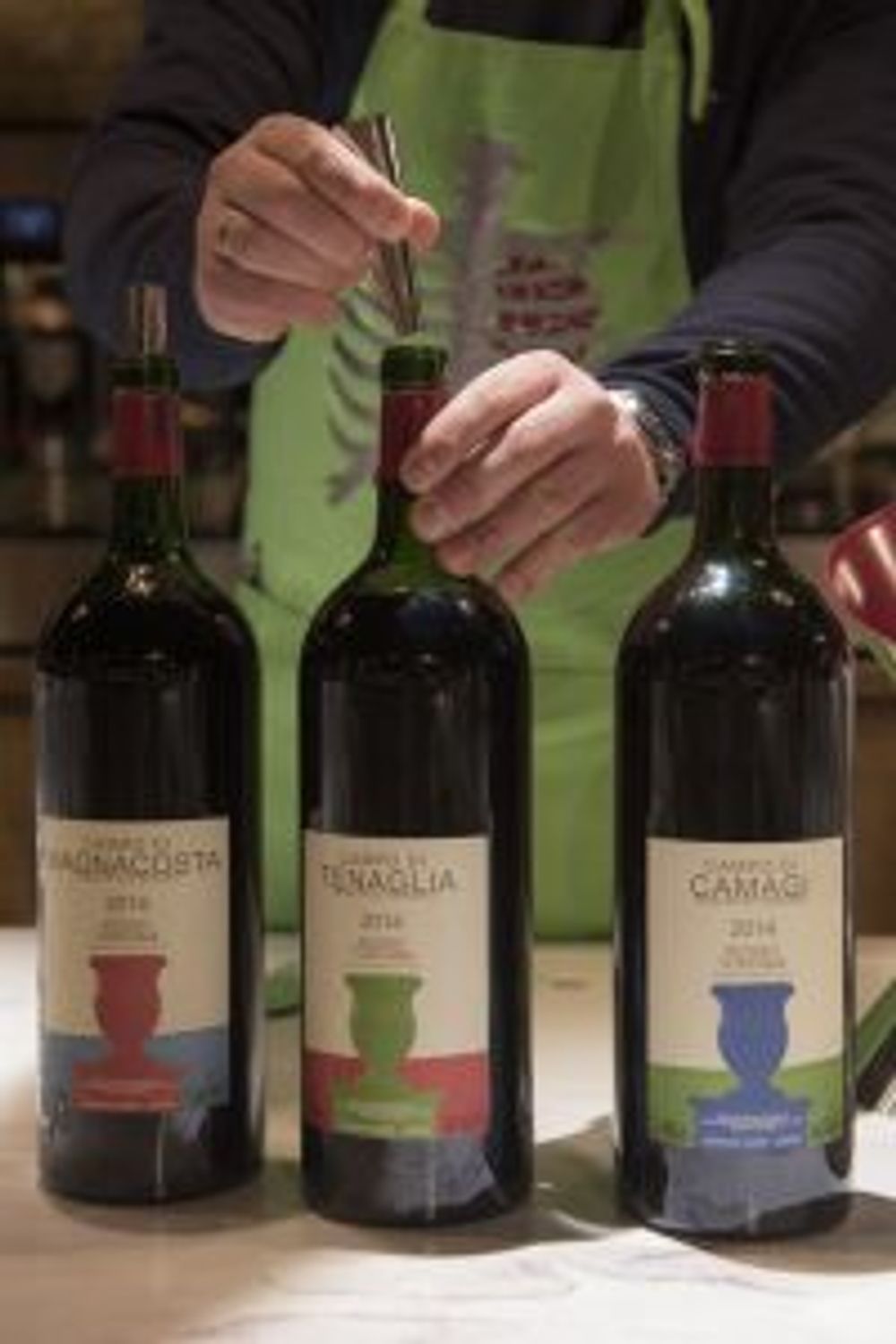
The 2014, which is the second vintage of the three single vineyard Cabernet Franc Campis – di Magnacosta, di Camagi and di Tenaglia are also wines made to make a big impression on the palate.
The wines have heaps of black fruit, liquorice, tapenade, grilled meats, pepper, and a youthful intensity – purple edges, iodine, young tannin. These are no longer wines in progress but would seem to have a bright future mapped out for them and wines that are made for collecting.
